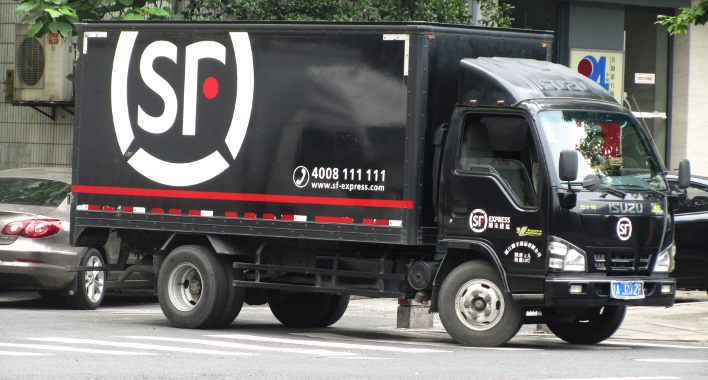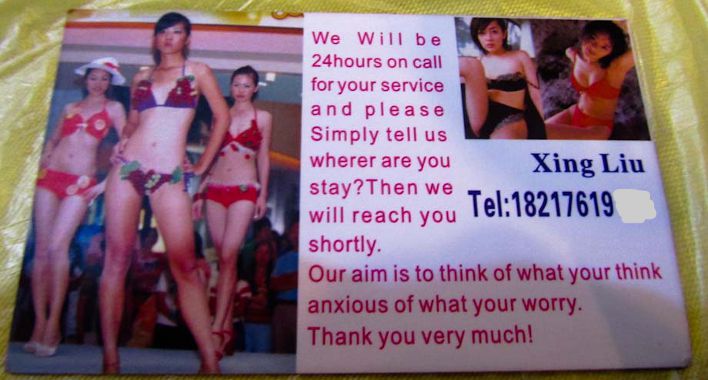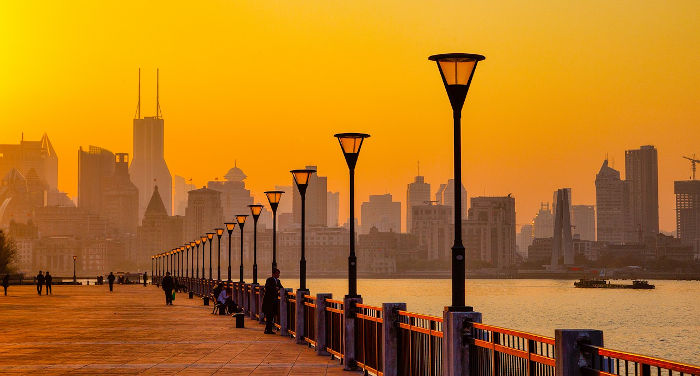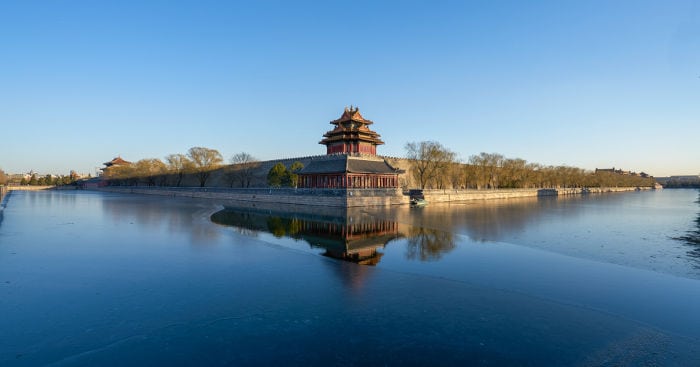
This guide is a collection of resources and practical advice for living in Beijing.
Living and Working in Beijing – Index
- The cost of living in Beijing
- The transportation system in Beijing
- The climate in Beijing
- Where to live in Beijing
- Tourism in Beijing
- Hospitals and clinics Beijing
- Schools and universities in Beijing
- Shopping in Beijing
- Useful addresses and numbers in Beijing
- Forums and directories for Beijing
- Frequently asked questions
The cost of living in Beijing
Click here to read our guide on the cost of living in China.
Transportation System in Beijing
Airports in Beijing
Before anything else, don’t forget that Beijing is one of the cities where it is possible to apply for an extension to a 72 hour visa.
In addition, here, you will find our guide on the best way to book international flights to China (as well as domestic flights in China).
Beijing Capital International Airport
The main airport in Beijing is Beijing Capital International Airport, where almost all intercontinental flights arrive.
It is located 32 kilometers to the northeast of the city. The easiest way to get there is by taking the Airport Express, a direct train to the airport which connects with lines 2 and 13 of the subway at Dongzhimen station, and line 10 at Sanyuanqiao station (see below for more information on the Beijing subway).
You can also take shuttle buses from various places in the city.
Finally, you can also take a taxi. The trip from downtown should cost a bit more than 200 Yuan.
Beijing Nanyuan Airport
Beijing has another airport, Beijing Nanyuan Airport, which is located 13 km to the south of downtown in the Fengtai district.
Nanyuan Airport is a military as well as passenger airport, where the company China United Airlines operates, which only offers domestic flights. The only way to get to this airport is by taxi or bus.
Train stations in Beijing
Click here to read our guide on trains in China (and to learn how to book a train ticket online).
In Beijing, there are four main train stations:
Beijing Railway Station
Beijing Railway Station is located in the Dongcheng district, and can be accessed via line 2 of the subway (the Beijing Railway Station stop).
The majority of the trains that go towards the North East China and the provinces of Shandong, and Inner Mongolia as well as the cities of Shanghai, Nanjing, and Hangzhou leave from this station. In addition, some of the international trains headed for Mongolia and North Korea also leave from here.
Beijing South Railway Station
Beijing South Railway Station is the largest train station in the city. It is located in the Fengtai district, and can be accesses via line 4 of the subway (the Beijing South Railway Station stop).
This is where almost all of the high-speed trains depart, the majority of which head to Tianjin, Shanghai, Qingdao or Fuzhou. Some of the K-class trains headed for Shanghai also leave from here.
Beijing North Railway Station
Beijing North Railway Station, also known as Xizhimen station, is currently a small station. The station is located just outside the Xizhimen subway station, which can be reached via lines 2, 4 or 13 of the subway.
Not many trains leave from this station. The ones that do are mainly K-class trains headed to the northern or northeastern part of the country.
Beijing West Railway Station
Beijing West Railway Station is located in the Fengtai district and is the second largest station in the city, and is one of the largest in the country. You can reach it via subway lines 7 and 9 (Beijing West Railway Station stop).
Conventional and high-speed trains headed to the western and southwestern part of the country, including trains headed for Xi’an, Chongqing, Chengdu, Lhasa and Urumqi, depart from this station. In addition, it is the final stop for the largest high-speed train line in the world, which connects Beijing with Guangzhou and Shenzhen.
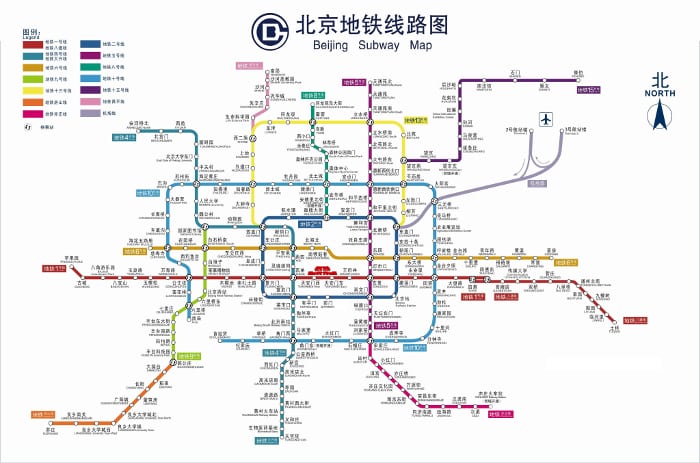
The Beijing subway system
The Beijing subway system is one of the largest in the world, and each year new lines are opened. Because of this, maps tend to become obsolete quite quickly. Currently, the official Beijing subway system website is only available in Chinese. If you want to check schedules and ticket prices, the Wikipedia article is very complete and is up to date.
Here you can check an interactive subway map offered by ExploreMetro (you can also download the iOS app).
Public transit cards in Beijing
If you are going to spend more than two days in the city, I suggest that you take out a “Beijing Municipal Administration Traffic Card (Yikatong Card)” (交通一卡通 or jiaotong yi katong, in Chinese), which you can obtain and top up at almost all subway stations. It is a card without a contract, and which you can top up (like the Oyster Card in London or the Octopus Card in Hong Kong).
To get one, you need to deposit 30 Yuan (which will be returned to you when you hand it back in). To top it up, go to any of the windows of the subway, and give the card to the ticket seller along with the amount of money that you want to add.
In addition to the subway, you can use it on buses, taxis, and the Airport Express.
Buses in Beijing
In Beijing, there are a little more than 1,000 bus lines, which are mainly run by a state company.
In Beijing, the use of buses is very widespread, and is necessary to get to many places, as the subway, although it is very extensive, is still far from adequately covering the city (which doesn’t stop growing). The ticket price depends on the distance: 2 Yuan for the first 10 kilometers plus 1 Yuan for each 5 additional kilometers. Keep in mind that with the Yikatong Card, you will get an additional 50% off. Click here to learn more about the bus system in Beijing.
The climate in Beijing
Beijing has a continental climate. Winters are very cold, long, and dry, at times with strong Siberian winds. It is rare for the temperature to go above 5 degrees during the day, although it is rare for it to snow (it tends to snow two or three times per year). Spring is short and is marked by frequent sand storms from the Gobi Desert, which fill the city with a yellowish dust. Summers are hot and humid, reaching 40 degrees, and turn the city into a sauna. During the summer, torrential rains are common in the late afternoon/night, and although they are brief, tend to turn the streets into hard-to-cross rivers. September and October are the most pleasant months, as rains are infrequent and the temperature is more or less temperate.
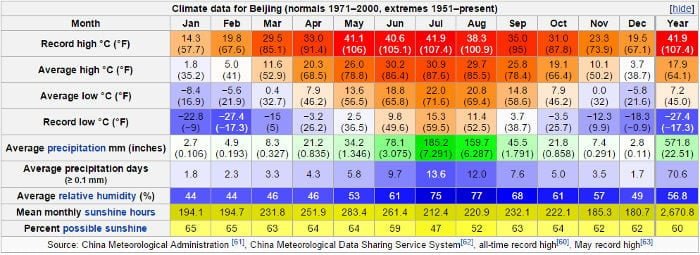 Statistics by Wikipedia.org (Creative Commons License).
Statistics by Wikipedia.org (Creative Commons License).
Where to live in Beijing
Beijing is mainly divided into six rings, which are delimited by “urban highways” which circle the city, and which constitute its main arteries. The first ring has no traffic, and circles the Forbidden City.
The second more or less corresponds to the Great Wall which in the past surrounded the city, and so on and so forth until the sixth ring, which is so far from downtown that some parts of it are even outside of the province. In addition to the rings, cardinal points are necessary for delimiting zones, and it is very common for people to refer to a location via its cardinal points and the closest ring number (for example, northwest of the second ring).
Beijing is a megalopolis and is one of the largest cities on the planet. Because of this, before deciding where to live, you need to keep your priorities and the type of lifestyle you want in mind.
If you don’t want to spend hours every day crossing the city to go to work or school, look for a place close to your job or university. If your workplace is in the third ring and you can’t afford such an expensive rent, at least look for an area which is well-connected with a subway station on the line that is convenient for you. At the same time, if you have children, you might want to look for a place close to their school.
If your social life is the most important thing to you, keep in mind that the majority of the bars and clubs are located in the Wudaokou area (to the northwest of the fourth ring), in Andingmen and Gulou (close to the north part of the second ring) or in Sanlitun (to the northeast of the second ring). Logically, these areas are where the most expats are concentrated (especially the ones that don’t have children).
In addition, you should keep in mind that Beijing is a less international city than other large cities like Shanghai, Guangzhou or Hong Kong, and because of this, access to certain products or services which are “normal” in the west can be difficult in certain parts of the city. If you are worried about having to give up some of your habits, I recommend that you live in the area around Sanlitun and the embassies, where you can live a lifestyle almost the same as in the west (although the prices are also very high).
Considering the whole city, in my opinion, the best option is to live in the northern part of the city, but still within the fourth ring. Choosing the east or west side greatly depends on the previously described factors.
Beijing has 16 districts, which due to their large population and surface area, on their own could constitute large cities. Some districts, such as Huairou or Miyun, are also located outside of the metropolitan area. Below, you will find a brief description of the most popular districts and sub-districts among the expat population. Here you can check out our complete guide on finding a place to live in Beijing (agencies, contracts, etc.).
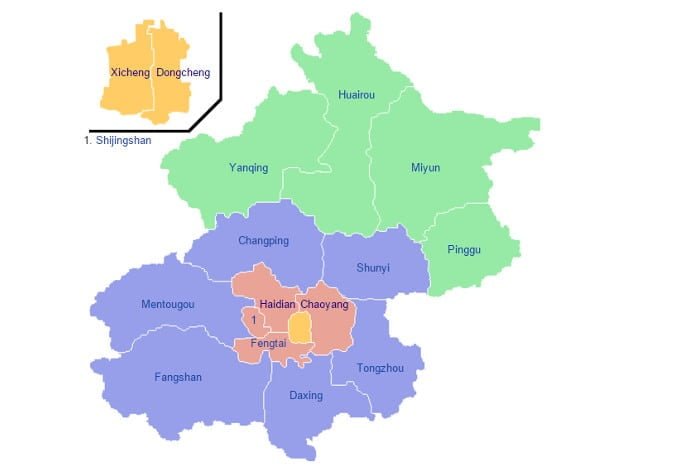 The districts of the city of Beijing – Map from wikipedia.org (Creative Commons License).
The districts of the city of Beijing – Map from wikipedia.org (Creative Commons License).
The Chaoyang District
Chaoyang is located in the east of the city, and without a doubt is where the largest number of expats are concentrated. The large majority of foreign embassies are located in Chaoyang, as well as the central business district where the majority of foreign companies are located.
The big advantage of this district is that it is in one of the most modern areas of the city, where the majority of the restaurants, leisure activities, and shopping for foreigners are located. In addition, almost all of the international schools and foreign diplomatic missions are located in this district.
The big drawback of this district is that despite the fact that you can find cheap lodging at above city standards, the prices tend to be prohibitive for many people.
The most popular sub-districts are:
- Sanlitun: This area, which is very close to the embassies, is where the majority of leisure activities and western-style shopping is concentrated.
- Guomao: While not a sub-district, this subway station is considered the heart of the business district, where the headquarters of thousands of Chinese and international companies are located.
- Wangjing: This sub-district is popularly known as Korea Town due to the large number of South Korean residents. Currently it also attracts many expats of other nationalities due to its modernity and the fact that the price of housing is less than in other parts of the district.
The Dongcheng and Xicheng Districts
These two districts are located within the second ring, and are the old districts of the city. As a result, they contain a large number of tourists. In addition, these two districts, and in particular Dongcheng, are very vibrant.
The main attraction of these districts is that they offer a combination of tradition and modernity, and are also a place where the west and the east meet. Here, there are a number of cafés, bars, restaurants and stores with the latest trends. In addition, a lot of the underground scene of the city concentrates here. Obviously, all of this is surrounded by historical sites and traditional houses (old houses or luxury houses) and places adapted to tourists.
The main drawback of this area is the high price of housing and the poor conditions of the majority of the houses, as well as the lack of public transport due to the fact that the majority of the streets are too narrow.
The most popular areas are undoubtedly the Houhai lake, Gulou, Andigmen and Yonghegong (Lama Temple) areas.
The Haidian District
Located in the northwest part of the city, Haidian is known as the university district, as hundreds of educational centers are located here. In addition, Haidian is one of the main technological innovation centers in the country. This combination makes it so that this district is mainly populated by young people, and as a result, is very active.
The main advantage of this district is that despite being a very active area with a decent offering of leisure activities and services (and mainly food), the cost of living is quite a bit lower than in the previously-mentioned districts. However, in the past years, prices have been increasing quickly, most of all for housing.
The drawback of Haidian is that certain “western” products and services are still hard to find, and as I mentioned earlier, housing is getting more and more expensive.
The two most popular sub-districts are:
- Wudaokou: This sub-district is close to the two most important universities in the city and country (Tsinghua and Peking), as well as the most popular languages university among foreign students (Beijing Language and Culture University). It was formerly also known as Korea Town due to the large number of South Korean residents (although Wangjing has taken this nickname away from it). Currently, it is one of the main leisure areas for both foreign and Chinese students.
- Zhonguangcun: Known as the electronic city, this sub-district is home to numerous shopping malls dedicated to technology, as well as the headquarters of the main technology companies in the country.
The Fengtai District
Located in the southwest of the city, the Fengtai District is popular because it is one of the poorest in the city, and until recently, it was a mainly rural district. Despite the fact that it has undergone a spectacular transformation in the past twenty years, it still preserves its “bad” reputation.
The main advantage of this district is that it is one of the areas close to downtown whose housing prices haven’t yet skyrocketed.
The main drawback is that public transit coverage is not particularly good, and there are relatively few leisure activities, especially for expats.
Tourism in Beijing
This article is dedicated to the practical aspects of the city. If you are interested in doing tourist activities, below is a selection of previously-published articles on this subject:
- Traveling to China: A general guide with all the information you need to travel to China.
- Travel to Beijing: Everything you need to know when traveling to Beijing.
- What to See and Do in Beijing: 10 Alternative Places: Some ideas for enjoying the city off of the typical tourist itinerary.
- 10 Things That You Should Avoid Doing in Beijing: Some advice on the common mistakes that newcomers to the city make.
- The Best Hotels in Beijing: Our reviews of the best luxury hotels and budget hotels in Beijing.
- The Great Wall of China: A Brief Guide to the 14 Most Popular Sections: A brief description of the most popular sections of the Great Wall of China to visit.
Hospitals and clinics in Beijing
Before moving on, if you are thinking about traveling in or moving to Asia without health insurance, you are making a mistake. If you have any health problems or accidents, nobody is going to attend to you unless you can pay in cash or it is covered by your insurance. Click here to learn more about this subject.
International hospitals and clinics in Beijing
If you want to avoid having to speak Chinese or ending up in a hospital whose hygiene standards are much lower than those in the west, you should consider choosing an international hospital or clinic. Here is a list of them (which is not at all exhaustive):
International SOS Beijing Clinic
Address: Suite 105, Wing 1, Kunsha Building, 16 Xinyuanli, Chaoyang District
Telephone: +862158799999
China-Japan Friendship Hospital
Address: 2, Yinghua Dong Road, Hepingli
Telephone: +861064282297
Beijing United Family Hospital
Address: 2, Jiangtai Road, Chaoyang District
Telephone: +861059277120
Beijing Vista Clinic
Address: Level 3, Kerry Center Shopping Mall, 1 Guanghua Road, Chaoyang District
Telephone: +861085296618
Amcare Women’s and Children’s Hospital
Address: 9, Fangyuan Xi Road, Chaoyang District
Telephone: +864001000016
Bayley & Jackson Medical Center
Address: 7, Ritan Dong Road, Chaoyang District
Telephone: +861085629998
Local hospitals
At local hospitals, unless they are a private VIP clinic (which will obviously be much more expensive), forget about speaking English or being admitted immediately. You will have to wait in line and speak Chinese. Here is a non-exhaustive list of public hospitals where they accept foreigners:
Peking Union Medical College Hospital
Address: 1, Shuaifuyuan, Dongcheng District
Telephone: +861069156114
Peking University Third Hospital
Address: 49, Huayuan Bei Road, Haidian District
Telephone: +861082266699
Peking University First Hospital
Address: 8, Xishenku Road, Xicheng District
Telephone: +861083572211
Beijing Jishuitan Hospital
Address: 31, Xinjiekou Dong Road, Xicheng District
Telephone: +861058516688
Peking University People’s Hospital
Address: 11, Xizhimen Nan Road, Xicheng District
Telephone: +861088326666
Schools and universities in Beijing
Private, public and international schools
Regarding kindergarten, primary school and secondary school, there are three possibilities. The first option is a private international school. In Beijing, there is a wide variety of study plans (American, British, French, German, Japanese and Singaporean, among others).
There are numerous advantages of international schools, from highly-qualified teachers to small class sizes of 10-20 students. The drawback is the price, as we are talking about prices around and even greater than 15,000 to 20,000 dollars per year.
It is obvious that this option is only within the reach of people with a large amount of money or who have a contract with a western company which provides for the schooling of children.
Another option is Chinese private schools, many of which offer programs with particular attention paid to teaching English. Compared to international schools, they are less expensive, although you may need connections to enroll your child. In addition, children are required to have an advanced level of Mandarin (you can read this article to find cheap alternatives to international schools).
Public schools are free for children of Chinese nationality, but are provided at a cost to foreigners, although they are considerably cheaper than private schools. Nonetheless, there are multiple problems with public schools. First of all, education is exclusively in Mandarin, the teaching method is the traditional Chinese way (where emphasis is put on memorization over creativity), and extracurricular requirements are too demanding for the majority of foreign children. In addition, the best schools require a tough selection process and good contacts, despite the large number of students in classes (around 50 children). Nonetheless, if you are still considering a public school, you should know that there is at least one school (The Number 55 Middle School) that has a section for foreign students.
Last of all, the requirements for being admitted into a Chinese public school are that your child must reside in the school catchment zone. This has made it so that many families have moved to the areas around the best schools, thus increasing the cost of rent.
Universities
These are the four most important universities in Beijing:
Founded in 1911 as a high school for Chinese students who were going to be sent to the United States, this is one of the most prestigious universities in China, and consistently appears among the top universities in Chinese rankings. The prestige of this university is backed by the fact that many of the country’s leaders, such as the current president Xi, studied at this institution. The main campus of Tsinghua University is located in the Haidian District and currently has around 40,000 students, of which 3,000 are foreigners.
Founded in 1898, each year the number one ranking among Chinese universities is disputed between Tsinghua and Peking University, which has trained some of the most important intellectuals in the country. Its main campus is located in the Haidian District in former imperial gardens from the Qing Dynasty. It currently has 35,000 students, of which around 9,000 are international students.
Renmin University of China (中国人民大学)
Founded in 1937, Remin University of China is also one of the most prestigious universities in the country, most of all for subjects related to social sciences and politics. In fact, among its former students are people who hold powerful positions in the Chinese Communist Party. Remin University is also located in the Haidian District, and currently has around 25,000 students, of which 1,500 are foreigners.
Beijing Normal University (北京师范大学)
Founded in 1989, Beijing Normal University is one of the oldest and most prestigious universities in the country, and is renowned for both the sciences and the humanities. Beijing Normal University is also located in the Haidian District, although almost bordering on the Xicheng District, making it the closest university to the Forbidden City. It currently has around 22,000 students, of which around 2,000 are foreigners.
Click here to see the complete list of universities in Beijing. Here you will find our advice for learning Chinese in Beijing.
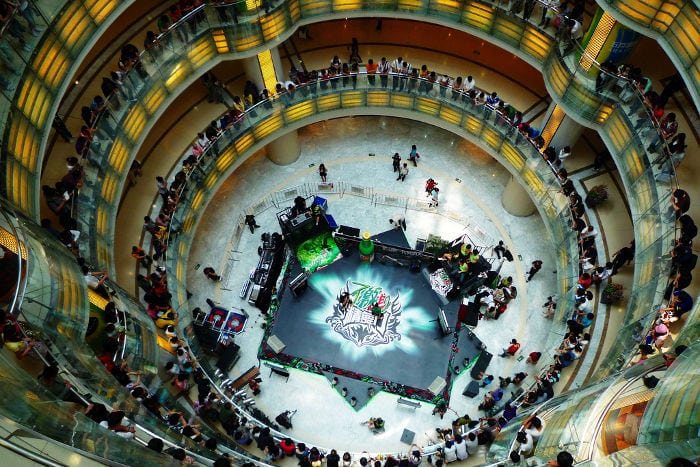
Shopping in Beijing
If you want to buy western brand products, I suggest you go to Carrefour. Here you will find a complete list of Carrefours in the city, including addresses and directions on how to get there. In addition to Carrefour, you will find a good selection of imported products in the multiple small supermarkets in the Sanlitun district, such as April Gourmet (they are generally more expensive).
Here is a list of the main shopping malls in downtown (Dongcheng and Xicheng) and the Chaoyang District:
Oriental Plaza
Address: 1, Changan Dong Road, Dongcheng District
Opening hours: 10:00-22:00
How to get there: Take subway line 1 to Wangfujing Station
Joy City
Address: 131, Xidan Bei Road, Xicheng District
Opening hours: 10:00 – 22:00
How to get there: Take subway line 1 or 4 to Xidan Station
The Financial Street Shopping Center of Beijing
Address: 18, Jinrongdajie, Xicheng District
Opening hours: 10:00 – 21:00
How to get there: Take subway line 6 to Chegongzhuang West Station
Kunlun Hui Shopping Center
Address: 2, Xinyuan Nan Road, Chaoyang District
Opening hours: 10:00 – 22:00
How to get there: Take subway line 14 to Futong Station
SKP Beijing
Address: 87, Jianguo Road, Chaoyang District
Opening hours: 10:00 – 22:00
How to get there: Take subway line 1 to Dawang Road Station
China central place
Address: 6, Dawang Xi Road, Chaoyang District
Opening hours: 9:00 – 22:00
How to get there: Take subway line 10 to either Liangmaqiao Station or Agricultural Exhibition Center Station
China World Trade Center
Address: 1, Jianguomenwai Road, Chaoyang District
Opening hours: 10:00 – 22:00
How to get there: Take subway line 10 to Liangmaqiao Station
Useful addresses and numbers in Beijing
Consulates in Beijing
If you lose your passport, need to renew it, or need to go to your consulate while you are in China, here is a list of some of the main Embassies:
United States Embassy
Address: 55, Anjialou Road, Chaoyang District
Telephone: +861085313000
Website: https://china.usembassy-china.org.cn/embassy-consulates/beijing/
Opening hours: 8:00-17:00, Monday to Friday except for public holidays
British Embassy
Address: 11, Guanghua Road, Jian Guo Men Wai, Chaoyang District
Telephone: +861051924000
Website: https://www.gov.uk/government/world/china
Opening hours: 8:30-12:00, 13:30-17:00, Monday to Friday except for public holidays
Australian Embassy
Address: 21, Dongzhimenwai Road, Chaoyang District
Telephone: +861051404111
Website: https://china.embassy.gov.au/bjng/home.html
Opening hours: 8:30 to 17:00 Monday to Friday except for public holidays
Canadian Embassy
Address: 19, Dongzhimenwai Road, Chaoyang District
Telephone: +861051394000
Website: https://www.canadainternational.gc.ca/china-chine/index.aspx?lang=eng
Opening hours: 8:00 – 12:00, 13:00 – 16:30 Monday to Friday
German Embassy
Address: 17, Dongzhimenwai Road, Chaoyang District
Telephone: +861085329000
Website: https://china.diplo.de/cn-de
Opening hours: “8:00-12:00, 13:00-17:30 (Monday to Thursday) 8:00-12:00, 12:00-15:00 (Friday)”
French Embassy
Address: 3, Dongsan Road, Chaoyang District, Beijing
Telephone: +861085328080
Website: http://www.ambafrance-cn.org/
Opening hours: 8:30—12:00, 14:00—17:30, Monday to Friday
Singapore Embassy
Address:1, Xiushui Bei Road, Jianguomenwai, Chaoyang District. Beijing
Telephone: +861065321115
Website: www.mfa.gov.sg
Opening hours: 8:30 – 12:00, 13:00 – 17:00 Monday to Friday
Exit and Entry Administration of Beijing Public Security Bureau
To extend your visa or renew your residency permit you will need to go to the Exit and Entry Administration of Beijing Public Security Bureau:
Address: 52, Jinbao Road, Dongcheng District
Telephone: +861084020101
Opening hours: 9:00 – 17:00 from Monday to Saturday
Health Center of Beijing Exit and Entry Inspection & Quarantine Bureau
To convert your work or student visa into a residency permit, you will need to undergo a medical exam at the Health Center of Beijing Exit and Entry Inspection & Quarantine Bureau:
Address: 6, Tianshuiyuan Road, Chaoyang District
Telephone: +861058619900
Opening hours: 9:00-17:00 from Monday to Friday
Public Security Bureau
To register your address (this process is obligatory unless you are living at a hotel), you will need to go to the Public Security Bureau or local police station in your neighborhood (ask for the direction from your landlord or the agency that rented the house or apartment to you).
Here is a list of the main offices in each district:
Daxing District: 35, Huangcun Xi Street
Dongcheng District: 52, Jinbao Street y 9, Dongdajie
Chaoyang District: 1 Xiaoyun Road
Fangshan District: 16, Hehuan Road
Haidian District: 67, Fucheng Road
Mentougou District: 45, Xinqiao Street
Pinggu District: 13, Pinggu Bei Street
Shijingshan District: Gucheng Nan Street
Shunyi District: 8, Shunping Xi Road
Tongzhou District: 475, Jiaowangzhuang
Xicheng District: 3, Xinhuaer Road
Yanqing District: 18, Hunan Xi Road
Forums and directories for Beijing
The Beijinger is a mix between a blog, a classifieds directory and a forum. For me, the classifieds are the most useful section.
eChina Cities is similar to The Beijinger, except I would highlight its list of leisure activities for expats.
Expat in Beijing is a forum which is completely dedicated to the city of Beijing.The most active sections are regarding work and renting apartments.
Internations is an excellent website for all people who want to meet others with similar interests, sign up for events to meet other expats living in the city, or to find information and advice.
MeetUp Beijing
MeetUp is a perfect website for people who are looking for others with interests similar to their own, from rock climbing to wine, vegetarian food, or even Chinese literature.
Frequently asked questions
We’ve seen this trend in other big Chinese cities too, like Shanghai and Shenzhen. It’s simply not like it used to be. Nowadays, sharing an apartment can cost equally much compared to having your own serviced apartment with swimming pool in places like Bangkok, Ho Chi Minh City and Kuala Lumpur. So, it’s fair to say that Beijing has become comparatively expensive to other places.
At the moment I’m writing this article, the PM2.5 is 177 micrograms according to the US Embassy in Beijing, which is significantly higher than the World Health Organization’s threshold of 10 micrograms. Of course there are other things worth checking, but let’s stick to the PM2.5 levels for now.
Keep in mind that you’ll need to share an apartment in that case, at least if you stay in the central areas. Living with a family, on the other hand, can costs you way more in case you need to find international schools, have a bigger apartment, and more.
It’s rare with unprovoked violence and robberies towards foreigners in China, which is actually more frequently heard of in places like Kuala Lumpur. Sure, you might come across tourist scams, where young people claims to be arts students, trying to sell you fake arts (I’ve experienced it myself and fell in the trap…).
Photo Credits: ![]() BEIJING ! by Mark爱生活
BEIJING ! by Mark爱生活
![]() Xidan Mall View by Thomas Galvez
Xidan Mall View by Thomas Galvez
